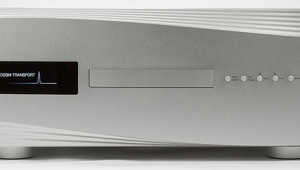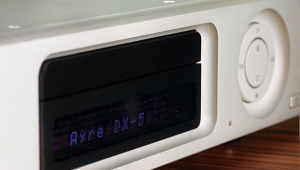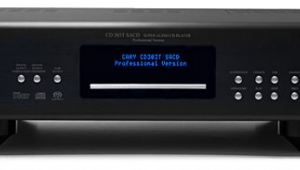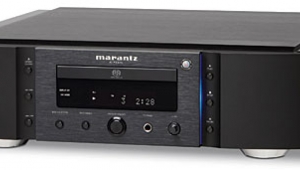| Columns Retired Columns & Blogs |
Classé Omega Super Audio CD player Measurements
Sidebar 3: Measurements
Like the Sony transport on which it appears to be based, the Classé Omega takes quite a while to read a disc and decide whether it can be played. However, it does read CD-Rs, so I was able to perform a full suite of tests on it. (Many of my CD-player test signals have been generated in the digital domain using an Audio Precision System One Dual Domain and burned onto CD-R.)
The Omega's error correction was good, but not in the class of the best DVD transport-based players I have experienced of late. It started to mute when playing track 31 on the Pierre Verany Test CD, which has 1mm breaks in the data spiral. The maximum unbalanced output level at 1kHz was a low 1.115V, and 2.253V from the balanced outputs. This was with CD data; with SACD, the maximum balanced level was slightly lower, at 2.238V. This is equivalent to just -0.06dB, and so shouldn't invalidate subjective comparisons of the two media. The player didn't invert absolute polarity (pin 2 of the XLRs appear to be wired as "hot"), and the output impedance from the single-ended jacks was a very low 17.7 ohms across the audioband, this doubling as expected from the balanced XLRs.
CD frequency response (fig.1, top pair of traces) was flat, though with a slight HF rolloff, reaching -1.1dB at 22kHz. The balanced and unbalanced outputs were identical in this respect. The response with a de-emphasized signal (fig.1, lower traces) was also flat. Fig.2 examines the response with both SACD and DVD-Audio data. The DSD-encoded signal on the Sony "tentative" test SACD gives a response that smoothly continues the top-octave rolloff seen in fig.1, reaching -10dB at 90kHz. By contrast, feeding the Omega's S/PDIF input with 24-bit/96kHz data gave the response shown as the upper traces in fig.2; the rolloff stops above the audioband, and returns to the 0dB level at 35kHz before dropping like a stone above 40kHz.
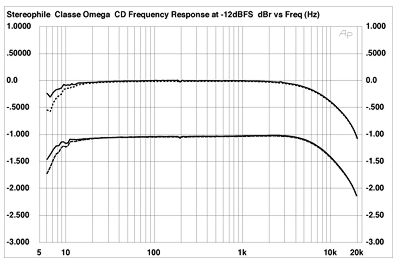
Fig.1 Classé Omega, unbalanced CD frequency response at -12dBFS, without emphasis (top) and with emphasis (bottom). (Right channel dashed, 0.5dB/vertical div.)
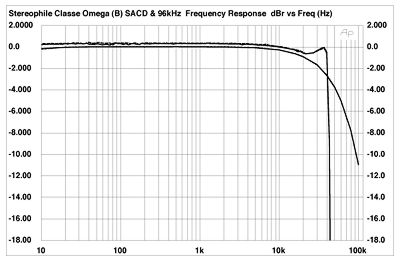
Fig.2 Classé Omega, balanced SACD frequency response at -3dBFS (bottom) and external 96kHz LPCM frequency response at -12dBFS (top). (Right channel dashed, 2dB/vertical div.)
I had a devil of a job generating this graph, by the way; the Classé almost always refused to lock to a 96kHz datastream, whether this was a TosLink or electrical connection from a DVD player or from a professional A/D converter. And even when it did so, the lock was extremely unstable. The same problem occurred with 88.2kHz-sampled data. However, the Omega did successfully lock to external 32kHz, 44.1kHz, and 48kHz datastreams, though the sample-rate converter doesn't seem to operate on external data.
The channel separation from the balanced outputs (not shown) was superb: better than 120dB in both directions. However, crosstalk from the RCA jacks held steady at a poor -40dB across the audioband. This is unusual, so I looked at the actual crosstalk waveform on a 'scope while repeating the measurement. Yes, it was true crosstalk, not noise. I therefore continued the testing using the balanced outputs, cross-checking the unbalanced signal when appropriate.
Fig.3 shows a spectral analysis of the balanced output signal while the player decoded CD data representing a dithered 1kHz tone at -90dBFS (top pair of traces) and external 24-bit data (bottom traces). The spectrum peaks at exactly -90dBFS, suggesting low linearity error, and no power-supply spuriae or distortion harmonics are visible other than a sniff of third harmonic in the right channel with 24-bit data. The increase in the bit depth results in a 15dB drop in the noise floor in the treble and 10dB in the midrange, suggesting a dynamic range of somewhere between 18 and 19 bits—around 6dB—one bit—worse than the best players or processors I have measured.
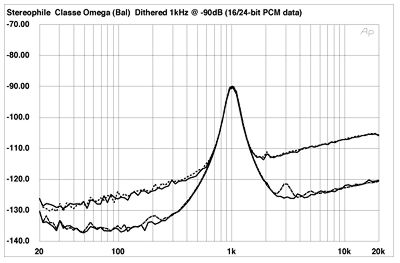
Fig.3 Classé Omega, 1/3-octave spectrum of dithered 1kHz tone at -90dBFS, with noise and spuriae (from top to bottom): 16-bit CD data, 24-bit external LPCM data (right channel dashed).
Repeating the spectral analysis with a 1kHz tone at the same level from SACD gave the traces shown in fig.4. The noise floor is very slightly higher in the midrange than with 24-bit LPCM data, but rises rapidly in the top three octaves of the audioband due to the aggressive noise-shaping used in the DSD encoding. Above 7kHz, SACD actually has less dynamic range than CD, though this will not really be of subjective concern.

Fig.4 Classé Omega, 1/3-octave spectrum of dithered 1kHz tone at -90dBFS, with noise and spuriae, DSD SACD data (right channel dashed).
- Log in or register to post comments

